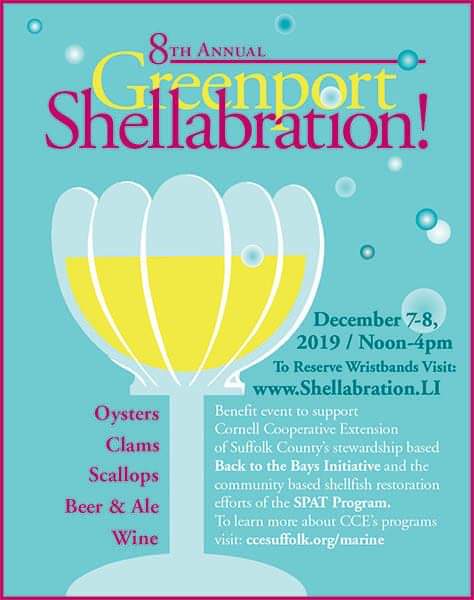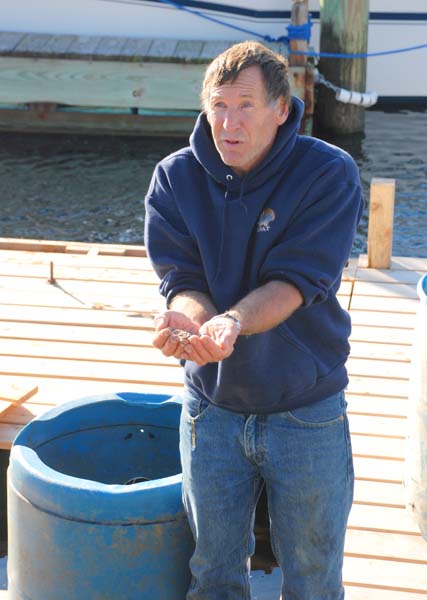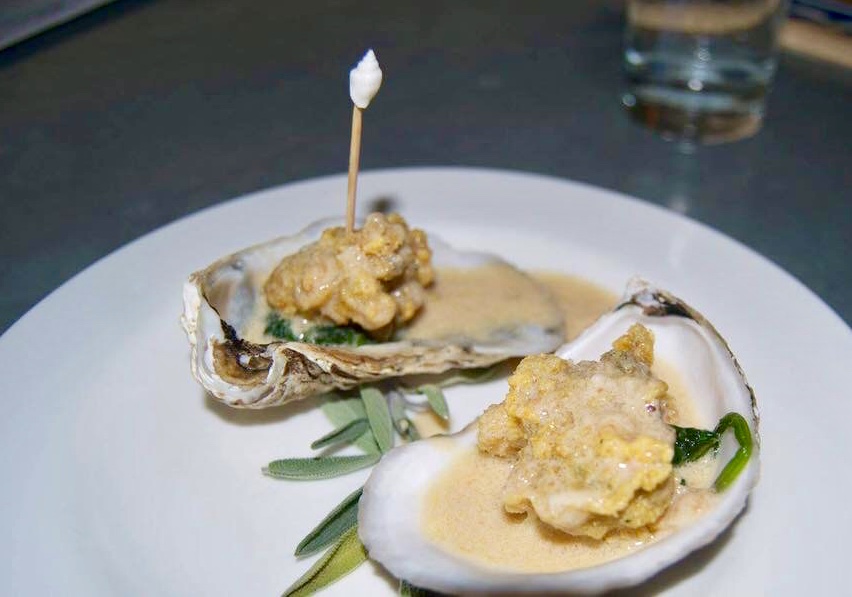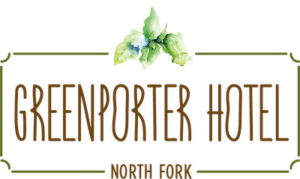
Shellabration was the brain-child of Greenport resident, John Kramer who floated the idea by friends and potential participants during a quiet winter. In his first year, the wristbands sold out as participants came in from all parts of Long Island, New York City and Connecticut to participate. The SPAT program, which Shellabration supports, was founded by another pioneer, Kim Tetrault at Cornell Cooperative Extension Marine Program.
In 1998, Kim Tetrault, who holds an undergraduate degree in Field Biology from Connecticut College and a Master’s Degree in Shellfish Aquaculture from University of Rhode Island, made his way to New York. After completing his master’s program, he was offered a full-time position to run the Cornell shellfish hatchery with an emphasis in culturing scallops in the wake of the brown tide. While attending a conference he was inspired by a presentation that changed his life and upon his return, he wrote a business plan for a community training and gardening program. This was the precursor of SPAT. that would expand a community effort beyond that of the confines of the hatchery and into the public waters of the East End of Long Island. He founded SPAT in 2000, as a sanctuary for shellfish to hatch their young until they could reach an adult size and release their spawn into local creeks and bays, and to promote wild settlement.

The founding of Greenport Shellabration and SPAT continue to inspire as both were community, grassroots projects that became larger initiatives with national recognition. The festival is being managed for the eighth year by Kim Barbour, head of outreach programs at the Cornell Marine Program.
SeasonedFork’s Interview with Kim Barbour about Greenport Shellabration
How does it feel to move forward with another year of this fundraiser and celebration in our village?
It’s exciting to manage this event and keep it going for its 8th consecutive year in the very Village where it was born. There are so many things to love about Shellabration and how it reinforces the partnership between local businesses, our local shellfish industry, and our community. Most importantly, it raises awareness and support for our science-based programming conducted by Cornell Cooperative Extension’s Marine Program, specifically our SPAT Program and Back to the Bays Initiative. Both of these projects create opportunities for people to get involved with efforts that are making a real impact on the health of our bays.
Tell us more about the Cornell Marine Extension? Describe the educational programs.
The core of our mission is educating the public, and conducting programming and projects that are focused on our marine environment. Our efforts are designed to inspire youth and adults to become stewards of our environment. This is done through programs like SPAT, which give anyone the opportunity to become an oyster gardener and learn just how important species like oysters are to the health of the bays. We also conduct extensive marine and coastal habitat restoration projects, and large-scale shellfish enhancement projects focused on bringing back our bay scallops, creating oyster reefs, and seeding clams into our waters. Our scientific professionals work very hard on these efforts each year, and through our Back to the Bays Initiative, we are able to provide our community members with unique experiences to get involved with this science-based work. Shellabration directly supports these efforts.

For young people interested in pursuing a career in agriculture or marine sciences, what is your advice?
I have a degree in Environmental Science with a minor in Public Relations from Marist College and Masters in Environmental Management from SUNY Stony Brook. In addition to planning, overseeing fundraising and outreach events, I also work on projects that involve fieldwork. This sometimes requires me to be out on a boat, diving in the water or hiking through a marsh-it’s a pretty diverse job sometimes.
I know it doesn’t happen much these days where you go to school and study something and then you get to work in that specific field. I’m very lucky to have an opportunity to have a career that reflects what I formally studied in. For high school and college students looking to pursue careers in environmental sciences, I’d recommend volunteering, interning and working on building your skill set, knowledge of the subject matter. We take on interns and volunteers each year, and several of them now work for my organization. It may take some patience and persistence, but it is possible to make a career out of what you’re passionate about, and what you choose to study in school.
Why are shellfish so important for our environment?
Historically, the shellfish industry has been a big part of our maritime heritage and marine economy. But water quality issues led to the decline of various shellfish species, making it more difficult to make a living on the water in recent decades. This is where resource enhancement and aquaculture come in. We need to build back our natural stocks, and in the meantime, aquaculture has become a viable alternative for those seeking to work on the water. The newly diminished scallop harvest is a prime example of what happens when we stop paying attention to our waters.
Our aquaculture experts like Kim Tetrault and Gregg Rivara help people who want to grow shellfish, either commercially for a living or on a smaller recreational scale with our SPAT program. We help train people in the field of aquaculture and through the shellfish seeding activities, we partner with local individuals and municipalities. This facilitates the growth of millions of shellfish in our waters each year. These filter feeders help improve water quality, create jobs, and when harvested; get to be enjoyed by us at events like Shellabration!

What can we do, as individuals (who do not have waterfront property and don’t have the ability to farm oysters), to protect our local waters?
You want to be mindful that everything that happens on land will eventually impact our waters. We all possess a certain amount of power that can collectively help protect our resources. Also, simply getting involved with SPAT and Back to the Bays can go a long way in helping our marine environment! Each year we put out a publication that features a wide variety of “Ways to Give Back to the Bays” including everything from educational lectures, special events and fundraisers, science-based youth programming, and stewardship workshops, the list goes on. We try to offer accessible ways to get involved and give back. Bring your children to one of our Marine Summer Camps, there are many ways we can all become informed and more involved. Check out ccesuffolk.org/marine to learn more, and I hope to see you at Shellabration!


